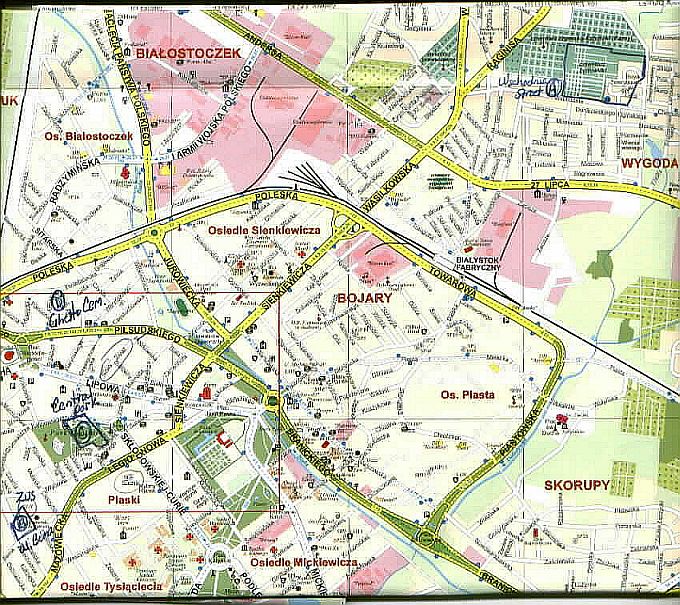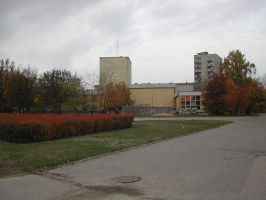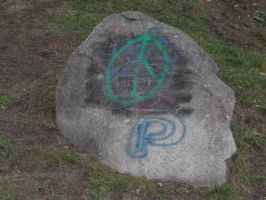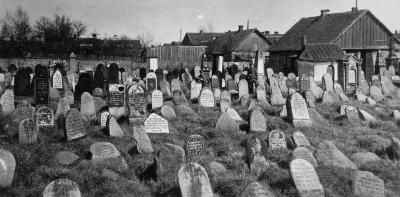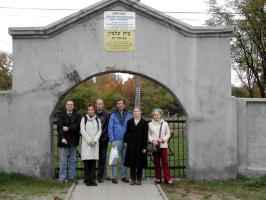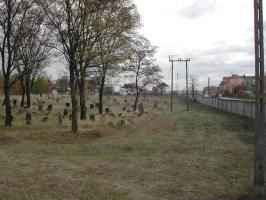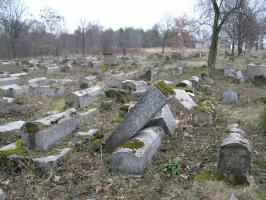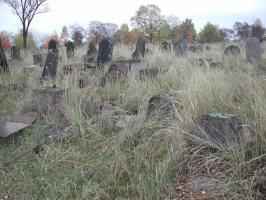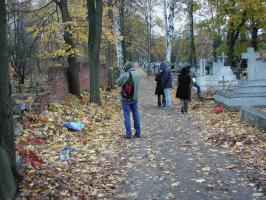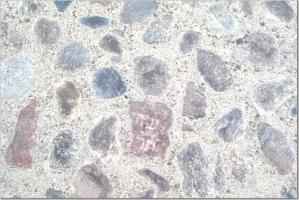

BIALYGen
Bialystok Region Jewish Genealogy Group
Our Bialystok Jewish Angel --
Lucja (Lucy) Lisowska, a Jewish woman living in Bialystok -- is
dedicated to preserving Jewish memory and heritage in the Bialystok area.
She spends most of her spare time ensuring that the Wschodnia Street
Cemetery is cared for and preserved.
In June 2006, Lucy arranged with FODZ
(the Foundation for Preservation of Jewish Heritage in Poland) to close an
opening in the Cemetery wall that allowed partygoers and vandals easy access
to the Jewish Cemetery. For more information and photos, click here.
In March 2007, Lucy was
instrumental in persuading the Mayor of Bialystok to construct a wall along
the northern border of the Wschodnia Street Cemetery that separates the
Jewish Cemetery from the adjoining Catholic Cemetery. This wall is the first
step in the restoration of this Cemetery and will save those who restore the
Cemetery about $80,000 US. For more information and photos, click here.
BIALYSTOK JEWISH CEMETERIES
by Tomasz Wiśniewski (editor's notes in italics)
It appears that six cemeteries were used
throughout the centuries by the Jewish community in Bialystok. The first one,
from the second half of the 16th century, was probably located at the southern
frontage of the Kościuszko Market Square (at the mouth of present
Sienkiewicza Street), but neither its existence nor its absence can be confirmed
with sufficient evidence.
The second, at the so called "Suraż
suburb", came from the 18th century. The oldest tomb here was dated from
1764. This cemetery was situated on Kalinowskiego Street, more or less at the
location of the present Park Centralny. It was divided into sections and had
alleys marked out. It had functioned till about 1890.
This so called "Central
Park" Cemetery is now located under the
east half of Bialystok's Central Park. One matzevah survives near a mound (a
hill) where it is thought more matzevot are buried. Click for Photos.
Next was the so called "cholera"
cemetery situated at Bema Street (at about the present market site). It was
established in 1840 with the aim to contain graves of contagious diseases
victims (among them those who died in the epidemics of cholera in the 1830s and
1840s). Also bodies of less well-off were buried here. The cemetery was closed
in 1892.
The "Cholera" Cemetery is now located under the
ZUS (Poland's Social Security Administration) Building and its parking lot.
As recent as 2001, the ZUS building was expanded unearthing many Jewish
graves. Click for Photo.
Two years earlier, at the area of previous
village Bagnówka (now Wschodnia Street) fourth cemetery was located, near
orthodox and catholic cemeteries. Contrary to previously mentioned Jewish
cemeteries, it still exists. The last burial took place in 1969. It is one of
the largest Jewish cemeteries in Poland (its area measures about 12.5 h). Among
its monuments there is the obelisk to the victims of pogroms of 14th, 15th and
16th June 1906.
This Cemetery, known now as the ul. Wschodnia
(Street) Cemetery, is currently owned by the City of Bialystok and
serves as a public park. Much of the Cemetery grounds still exist, except
for the far eastern section, where houses now stand. These houses reportedly
are built on foundations made from Jewish Matzevot. Of the estimated
40-50,000 original Matzevot, 5-7,000 still exist, with 50-75% of these
either broken or toppled. JewishGen/BIALYGen and a group of students from
the University of Bialystok are documenting the surviving Matzevot via
digital photos. The students' work, the Golden Macewa Project, has a website.
In May 2002, the Foundation
for the Preservation of Jewish Heritage in Poland, in compliance with
Polish restitution law covering pre-war Jewish communal property, placed a
claim on this Cemetery. The processing of this claim continues. As soon as
ownership is determined, a project to
restore the Cemetery and memorialize our ancestors will commence.
Click for photos.
The most recent Jewish necropolis was the
cemetery which, as the only one in the occupied Europe, was established at the
area of the Ghetto (at Żabia Street) on August 1, 1941. The bodies of 3,500
victims were buried here, among them fighters of the Ghetto Uprising. The Burial
Society (Chewra Kadisza) functioned here until the Ghetto was destroyed in
August 1943. The graves were simple, either for one person or common brothers'
grave. In the years 1944 – 49, the cemetery was tidied up and enlarged
(through buying out private plots of ground). The families of the dead and the
murdered put up new tombs, frequently symbolic when the location of the body was
unknown. The cemetery became the location of the obelisk to the fallen in the
Uprising and Jewish partisans. At the beginning of the 70s, despite numerous
protests, the city authorities decided to close down this unique cemetery. The
remains of the victims were exhumed and put into a common grave. The tombs, the
monuments and the mausoleum disappeared. Today the only evidence of the cemetery
is a commemorative plaque erected in 1971.
The ul. Zabia Ghetto Cemetery is now a City park with a
monument to the victims who perished in the Bialystok Ghetto. Click for photos.
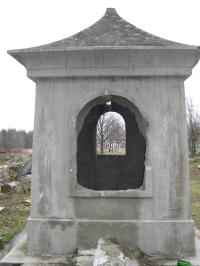 |
|
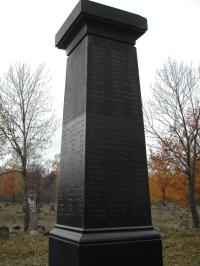 |
|
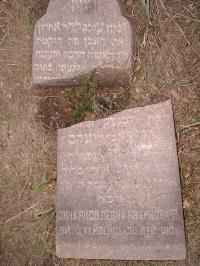 |
| Ohel for Rabbi
Chaim Herc Halpern (1922) |
|
Memorial to
Victims of 1906 Pogrom |
|
Sample Matzevah |
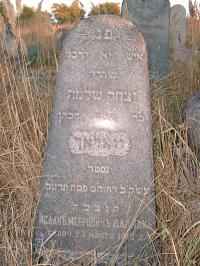 |
|
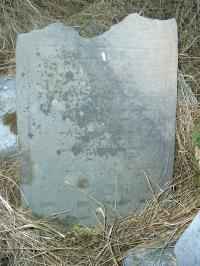 |
|
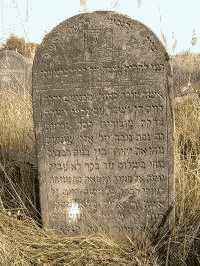 |
| Samples
of Remaining Matzevot |
|
| ul.
Zabia Ghetto Cemetery |
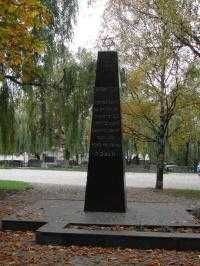 |
|
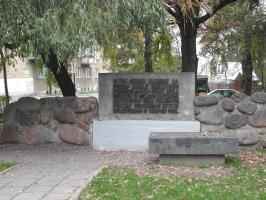 |
| Commemorates
Fighters of Ghetto Uprising |
|
Commemorates
3,000 Jews murdered in Ghetto |
This research group, its mailing list,
and this website are hosted by JewishGen, Inc. at
no cost by JewishGen, Inc., the Home of Jewish Genealogy. If you have been aided
in your research by this site and wish to further our mission of preserving our
history for future generations, your JewishGen-erosity
is greatly appreciated.
Copyright
© 2004-07 BialyGen, Mark Halpern, Coordinator, All rights reserved.
Last
Updated on 6 April 2007.


